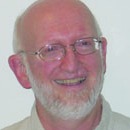Steven Benham
Professor Emeritus

Email: benhamsr@plu.edu
- Professional
- Biography
Education
- Ph.D., Geology, Indiana University, 1979
- M.A., Geology, Indiana University, 1971
- B.S., Geology, Washington State University, 1968
Areas of Emphasis or Expertise
- Stratigraphy
- Sedimentation
- Paleontology
- Oceanography
Biography
Dr. Steven R. Benham began his career at PLU in the fall of 1982. Steve grew up in rural Kitsap County, WA, attended Olympic Community College for two years, and then earned his Bachelor of Science degree in Geology from Washington State University. He went on to pursue a Master of Science and a PhD in Geology from Indiana University, where he studied carbonate petrology and calcareous algae in the Florida Keys.
Prior to coming to PLU, Steve taught at Ball State University in Muncie Indiana, the College of William and Mary in Williamsburg, Virginia, and the University of Missouri, in Kansas City, Missouri. He also worked in the exploration and mining industry, specifically in base metal sulfide exploration geology, a platinum mine in Nye, MT, as a consultant in a core lab on a project in Centralia, WA, and on various environmental impact assessments.
Dr. B., as the students call him, has taught a wide range of science courses at PLU, to both geology majors and non-majors over the years. These have included introductory courses in Physical Geology, Historical Geology, Geologic Principles, Geology of National Parks, and Oceanography. His upper division courses are in the “soft-rock” area, Stratigraphy and Sedimentation and Paleontology. Hands-on experiences in the lab and field have always been central to Steve’s classes and he loves to take students out to the coast during the lowest tides of the year, even when it involves a 6 am start! He has led many field trip courses that students remember fondly, notably to Hawaii over J-term and to the interior Southwest in the four corners area over Spring Break. He also taught in the Middle College/Challenge Program for over 20 years, helping a whole generation of high school students transition to the college experience, and learn some oceanography along the way!
Steve spent many hours working with very closely with students outside of class time. No one has escaped his upper division classes without learning to make thin sections in the rock lab and he was always there to help them learn to operate the equipment and develop the fine touch necessary to produce a perfect section. His passion is fossils and he loved to take students on expeditions to recover whale skeletons or fossils from ancient cold seep communities. All our alumni remember him for his enthusiasm, encouragement, inspiration and for challenging them to be the best they could be.
Steve has given generously of his time to the university and community, serving as chair of the department, managing the Rieke Science Center shop, and working with the Facilities staff on many projects, particularly in campus emergency preparedness. He is noted for his passion for building the fossil and rock collection in the department and for scoring “finds” of equipment and furniture at places like Boeing surplus. One of his most notable contributions to the university and to the department is the Scanning Electron Microscope (the SEM). He wrote a grant to the National Science Foundation to acquire the instrument in 1989 and he has worked long hours to keep this delicate and now aging instrument operating. The SEM has served the needs of our students and faculty from Geosciences and other departments for over two decades.
Over the past couple of decades, Steve’s scholarship has focused on the carbonate deposits and fossil records of ancient methane cold seeps, especially those found in Western Washington. He was recognized for his invaluable contributions to his research team’s work, especially his use of the scanning electron microscope, by having a fossil named after him in 1996. It is a gastropod mollusk called Ammonicera benhami that is about a half a centimeter in diameter and is from the early Eocene. He shared his passion for these cold seep deposits with our students and he mentored a number of capstone projects on the topic over the years.
He has also served the greater community with passion, giving presentations in K-12 classrooms, as a trustee of the Northwest Scientific Association, and in many lesser known capacities, such as serving as a range master and safety officer at the Gig Harbor Sportsman’s Club. He has always been willing to take phone calls from the public and help identify the “unknown and valuable” rock and mineral specimens that are brought to him. He combined his passion for geology and the environment as he and his J-term students helped the Nature Conservancy research and preserve from development the area of Honu’apo on the Ka’u coast on the big island of Hawai’i.
We are grateful for all that Steve had contributed during his career of more than three decades of service to PLU. We are grateful for his tireless devotion to students. We are grateful for his passion for sharing the excitement of geology with students and his enthusiasm on field trips. We are grateful for his dedication to the department, the university, and the community in many capacities.



Social Media